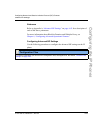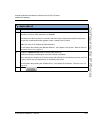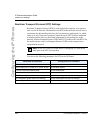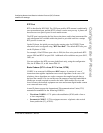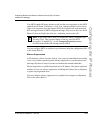
Global SIP Settings
41-001160-00, Release 2.1, Rev 04 4-65
Configuring Network and Session Initiation Protocol (SIP) Features
Configuring the IP Phones
RTP Port
RTP is described in RFC1889. The UDP port used for RTP streams is traditionally
an even-numbered port, and the RTCP control is on the next port up. A phone call
therefore uses one pair of ports for each media stream.
The RTP port is assigned to the first line on the phone, and is then incremented for
each subsequent line available within the phone to provided each line a unique
RTP port for its own use.
On the IP phone, the initial port used as the starting point for RTP/RTCP port
allocation can be configured using "RTP Port Base". The default RTP base port
on the IP phones is 3000.
For example, if the RTP base port value is 5000, the first voice patch sends RTP
on port 5000 and RTCP on port 5001. Additional calls would then use ports 5002,
5003, etc.
You can configure the RTP port on a global-basis only, using the configuration
files, the IP Phone UI, or the Aastra Web UI.
Basic Codecs (G.711 u-Law, G.711 a-Law, G.729)
CODEC is an acronym for COmpress-DECompress. It consists of a set of
instructions that together implement one or more algorithms. In the case of IP
telephony, these algorithms are used to compress the sampled speech data, to
decrease the content's file size and bit-rate (the amount of network bandwidth in
kilobits per second) required to transfer the audio. With smaller file sizes and
lower bit rates, the network equipment can store and stream digital media content
over a network more easily.
Aastra IP phones support the International Telecommunications Union (ITU)
transmission standards for the following CODECs:
• Waveform CODECs: G.711 pulse code modulation (PCM) with a-Law or
u-Law companding
• Parametric CODEC: G.729a conjugate structure - algebraic code excited
linear prediction (CS_ACELP).





